
The idea of launching a new product is exciting – and equally terrifying.
There are a lot of unknowns that come with developing a concept. And unfortunately making decisions based on assumptions and best guesses to those unknowns is why new products fail.
With up to 95 percent of all new products introduced each year failing, it’s important to beat the odds and make data-driven decisions early on.
In this blog post, we’ll share common reasons causing new product failure and how market research can be used to avoid missing the mark.
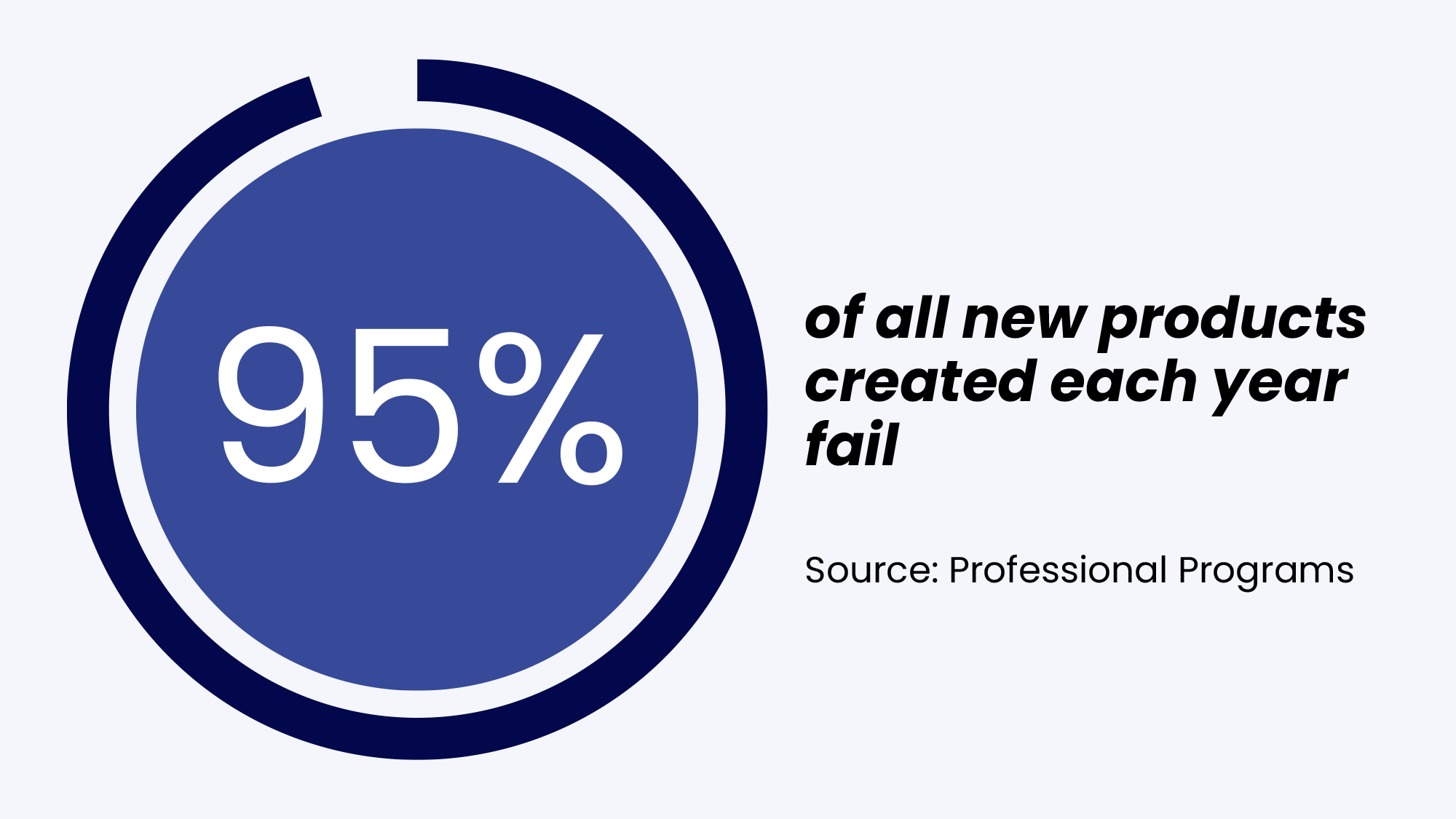
1. The Product is Unnecessary
While the causes for new product failure are not often cut and dry, this reason is straightforward.
If your product doesn’t try to solve a problem or enhance a consumer’s life in some way, it will not succeed.
Before anything else, consumers have to see the need for your product or service.
Most new products that claim fixes to everyday issues or ways to make life easier often overestimate the extent of the problem.
Consumers have priorities and sometimes the weight of continuing with a problem is less than the investment in time and money to try and resolve it.
In many cases, this is a main cause of why new products fail.
How to avoid it
An online survey is an economical and effective way to determine if there is a need for the product.
You can survey target consumers and ask questions such as
- What are your biggest pain points with X?
- How interested would you be in a solution to X?
- How much would you be willing to spend on a solution to X?
The results will tell you if your product has a need and further, who might need it most.
2. The product is launched too soon or too late
There is a reason for the saying, timing is everything.
And when it comes to understanding why new products fail, this is perhaps the most common factor.
Even if most things about the product are perfect, it won’t gain traction if the window for the need is closed.
Technology products are prone to this due to how quickly they evolve.
In fact, technology grows by 2x every 18 months in processing capacity.
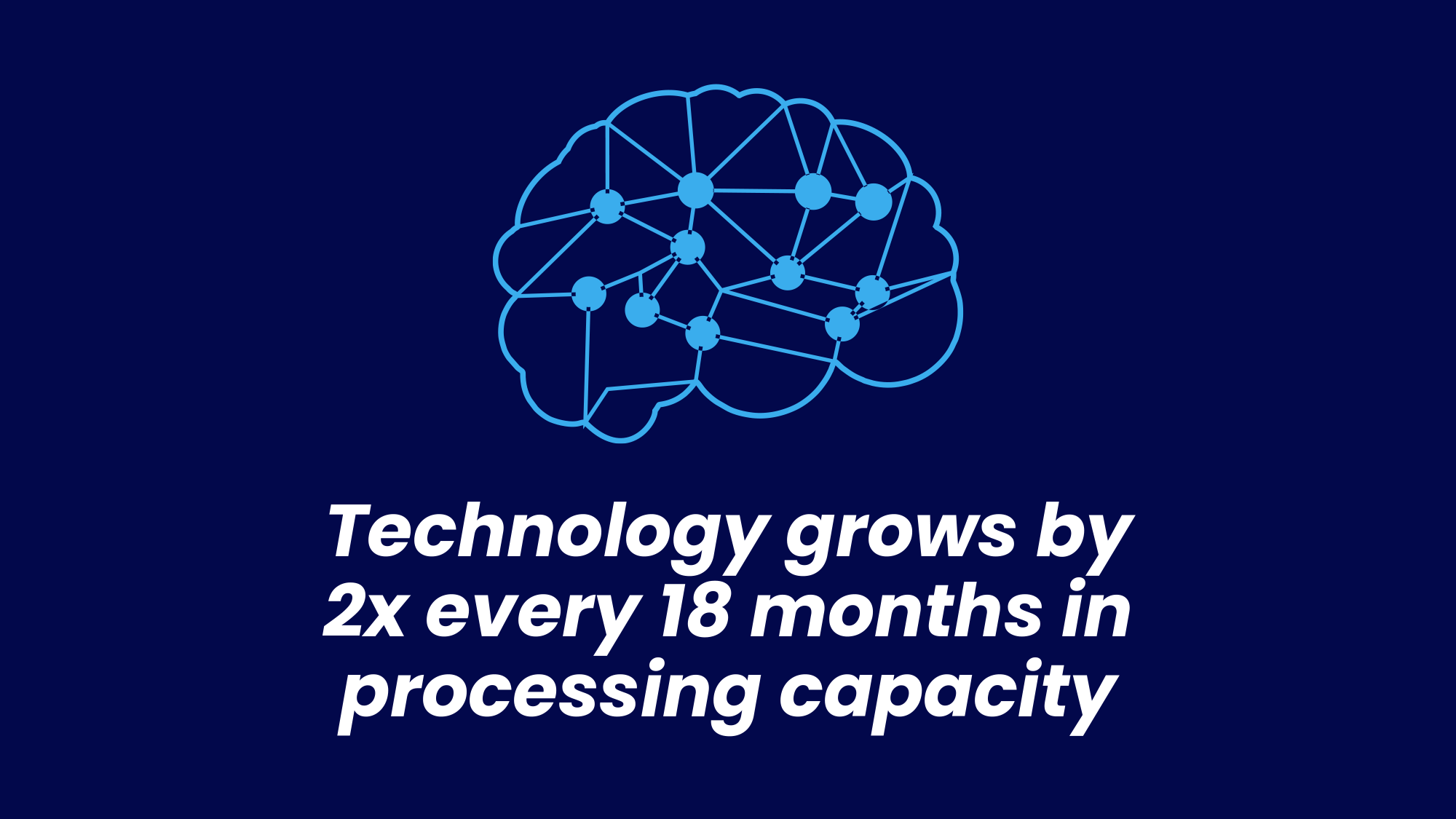
Take for example the first working prototype of barcodes.
They were developed in the late 1940s, but the widespread commercial use of barcodes didn’t happen until the 1980s.
The need to classify items and automate purchases was always there but complementary technology, such as machine scanners, was not viable at the time of introduction.
How to avoid it
A cheap and easy option to determine if your product is being introduced at the right time is with secondary research.
This research could include complementary data to support your product’s demand and potential applications.
For example, electric cars were extremely niche up until recent years.
So, if you were planning on mass-producing electric vehicles in 1970, you would most likely fail given the lack of infrastructure for charging stations.
Where today, our survey shows 1 in 3 are considering buying an electric vehicle for their next car purchase.
Also, qualitative research is applicable when it comes to evaluating the market’s readiness for the product.
Qualitative research methods best suited for determining why new products fail include:
- Focus group - to get in-depth, exploratory feedback
- In-depth interviews (IDIs) - to have one-on-one conversations with target buyers
- In-home usage tests (IHUTs) - to see how people perceive and interact with the product in their natural environments
3. The Product is Not User Friendly
From our experience conducting market research for new product development, a lot of companies have a blind spot when it comes to their product’s ease of use.
This is understandable as the new product development process tends to take a large toll on multiple teams within an organization.
While everyone internally knows the product’s function and how to operate it, the common consumer usually does not…at least at first.
Most assume that the learning curve will apply to everyone and if most don’t get it at first, they eventually will and just adapt in the meantime.
Unfortunately, this is a big contributor to the new product failure rate.
Not everyone has the same patience or level of commitment to the product.
Frustration can develop quickly and the relationship with the brand begins to diminish.
Real-world example
Recently, car makers started removing physical buttons and knobs from cars in favor of placing all controls within a touchscreen. While some adjusted to the configuration, a significant portion demanded physical buttons and knobs return.
How to avoid it
An effective tool for testing your products with users is in-home usage tests (IHUTs).
Several people are recruited to “try” the product in their homes, cars, workplaces, etc., for an extended period of time and provide feedback periodically.
You can also assign participants tasks to better understand the product’s functionality and limitations.
We’ve just scratched the surface of this type of market research. For more information, read our Ultimate Guide to IHUTS.
4. An Oversaturated Market
It’s hard to make noise with other bands playing on stage.
Even if the competing product is somewhat different or outdated, you will still be vying for the same customer.
It becomes increasingly difficult to position your brand against competitors who have more recognition and budgets to play with.
As a result new products then fail because they get lost in the shuffle and never gain any traction to grow.
How to avoid it
Most companies rightly conduct internal searches for similar offerings early in the new product development process.
A basic search can tell you information regarding the product’s price, features, and intended uses.
However, if you want to dig deeper and better understand the market landscape, a competitor analysis is the answer.
To truly avoid new product failure, you need to know where your rivals stand.
A competitor analysis could include everything from secondary research to a brand awareness survey.
The results provide actionable insights into…
- What products are market leaders
- Whether there is a gap in the market
- What consumers look for most in a product
- How consumers become aware of a product
And several other metrics to assist in data-driven decision-making.
Recommended Reading: Ultimate Guide to Competitor Analysis
5. Poor Labeling and Package Designs
An unappealing label or packaging design can cause a product to fail quickly.
In fact, 72 percent of American consumers say that product packaging design influences their purchase decisions.
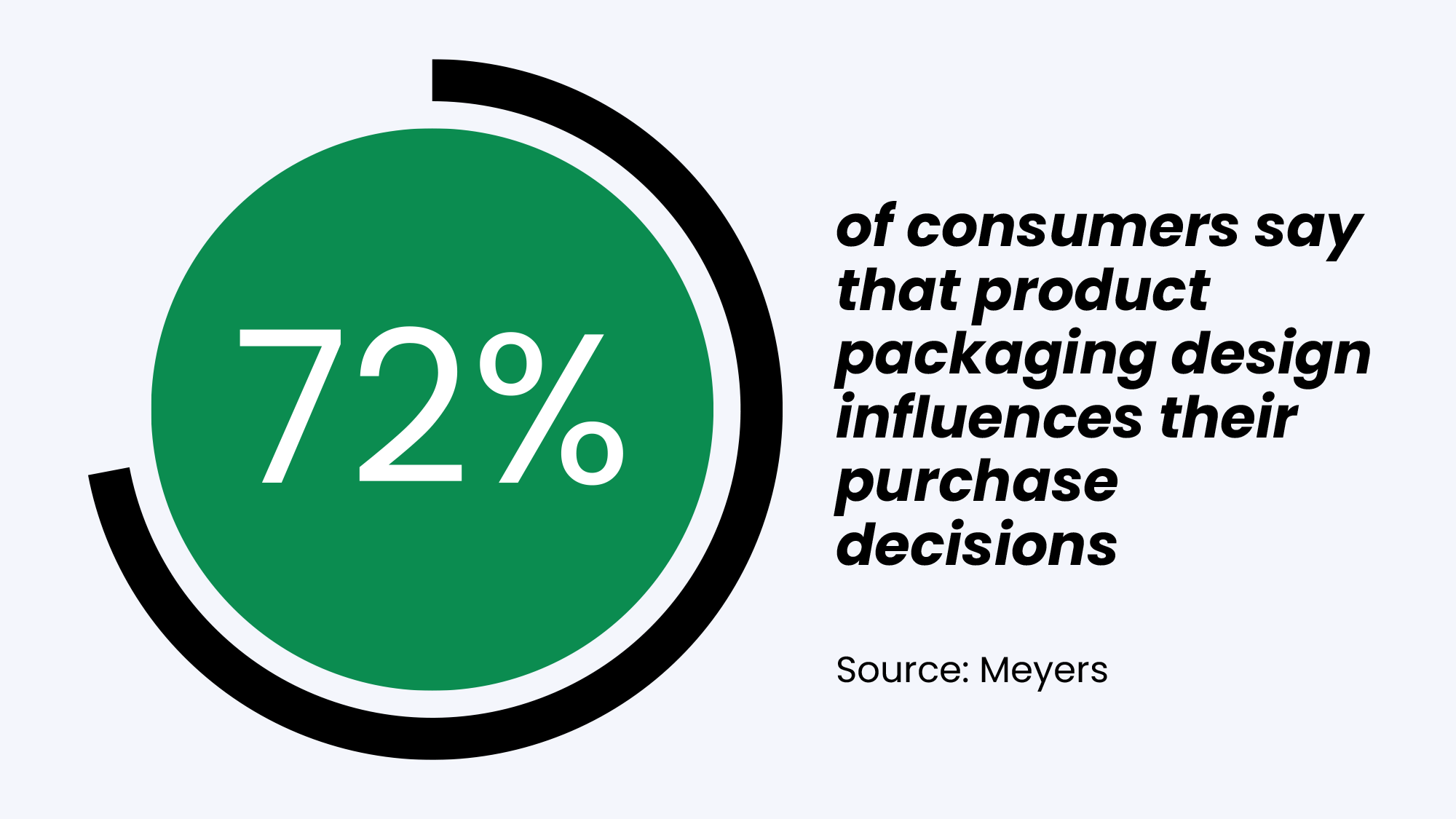
While there is no one reason for a failed product design, in most cases it involves the customer not being able to effectively connect with the product.
Customers can only see so much on a shelf or webpage.
Therefore, if your product doesn’t attract the eyes of customers, it will get overlooked and forgotten.
Aside from design, packaging materials are important to mention when determining why new products fail.
Studies show that a majority of consumers agree the materials used to package a product often influence the decision to purchase.
Additionally, 67% also said paper and cardboard packaging is more attractive than other materials used for packaging.
How to avoid it
A package label testing survey can help you decide on an appealing package label and avoid new product failure.
You can test different labels to see how images or messages are coming across with heat map survey questions.
The results will help you make necessary changes and decisions for your product’s success.
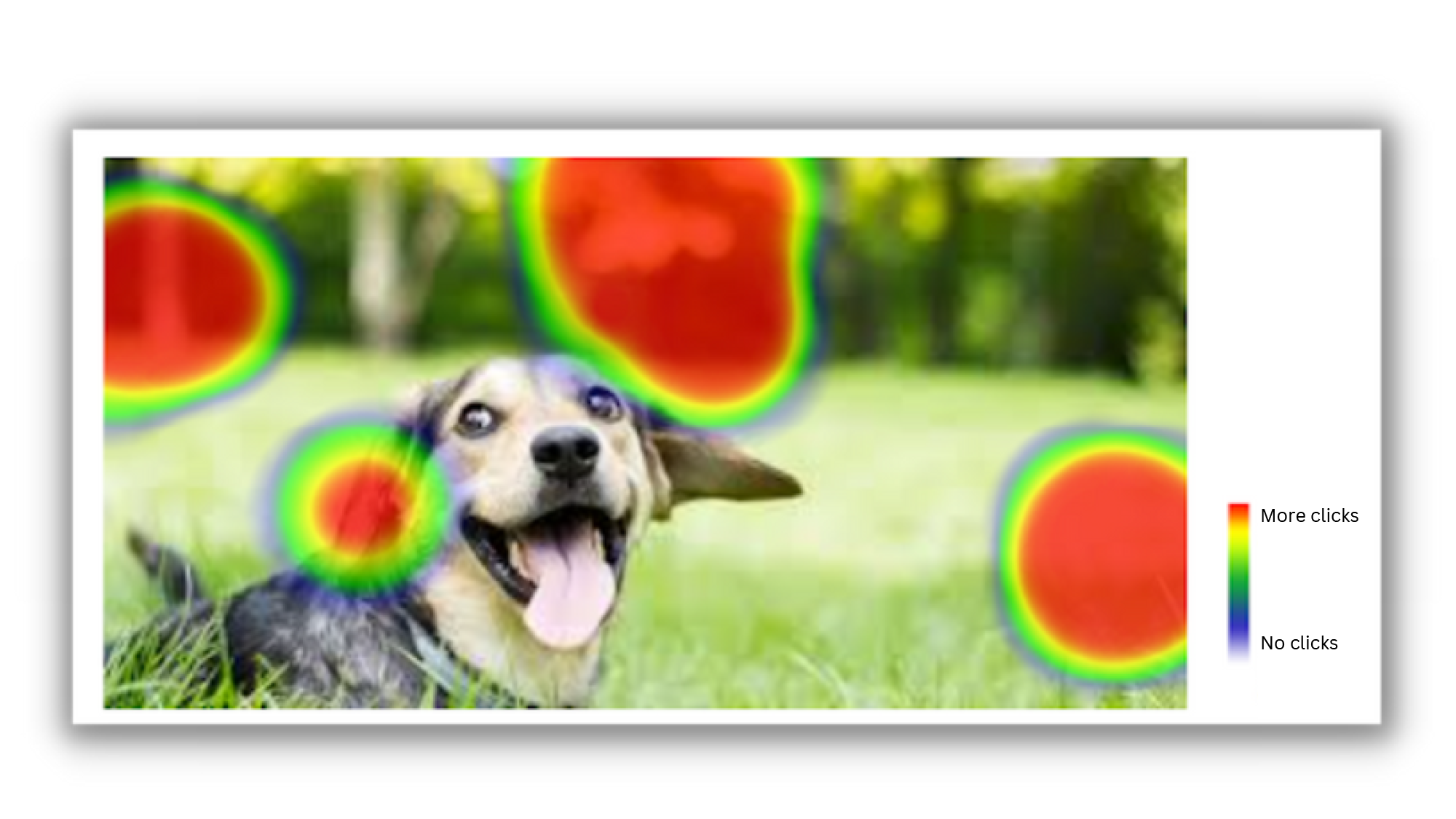
Another solution to better understand a customer’s perspective is a shelf testing/eye-tracking study.
Shelf testing studies utilize eye-tracking software to track a customer's eye movements as they view products on a store shelf.
The data captured includes changes in direction, attention, focus, presence, and pupil size.
This will help you understand what to include in your label to help consumers' eyes look at a row of products but focus on yours first.
6. Poor Pricing Model
Not surprisingly, hefty pricing can contribute to why new products fail. That’s because customers tend to be price-sensitive on most products.
However, it doesn’t mean they always select the cheapest option as other factors like quality, value, brand familiarity, and exclusivity can have an impact on customer decision-making.
Without some knowledge about how these factors affect your product, pricing appropriately becomes very difficult.
How to fix it
The following options and models can help you decide on an effective price. Let’s discuss how each model works.
Pricing sensitivity surveys
A pricing sensitivity survey looks to find the balance between a reasonable price and high interest from customers.
Respondents are asked if various base-level prices of the product are reasonable.
- If they find a price reasonable, the same question will be asked at a higher price.
- If and when they deem the price unreasonable, the question will be asked at a slightly lower price.
This self-negotiation helps understand the gap in expectations versus price.
For further information, here is an example of a past pricing sensitivity survey conducted by Drive Research.
Conjoint analysis
A choice-based conjoint analysis simulates customer decisions and determines how customers value various features that make up a product’s price.
Respondents are asked to select a card from a set that contains different levels of pricing and product attributes/features.
Therefore, using a conjoint-based model to determine product cost is able to indicate the relative importance of all attributes.
Doing so helps entrepreneurs to determine which categories are most meaningful to customer decision-making.
For more details check out our Ultimate Guide to Conjoint Surveys.
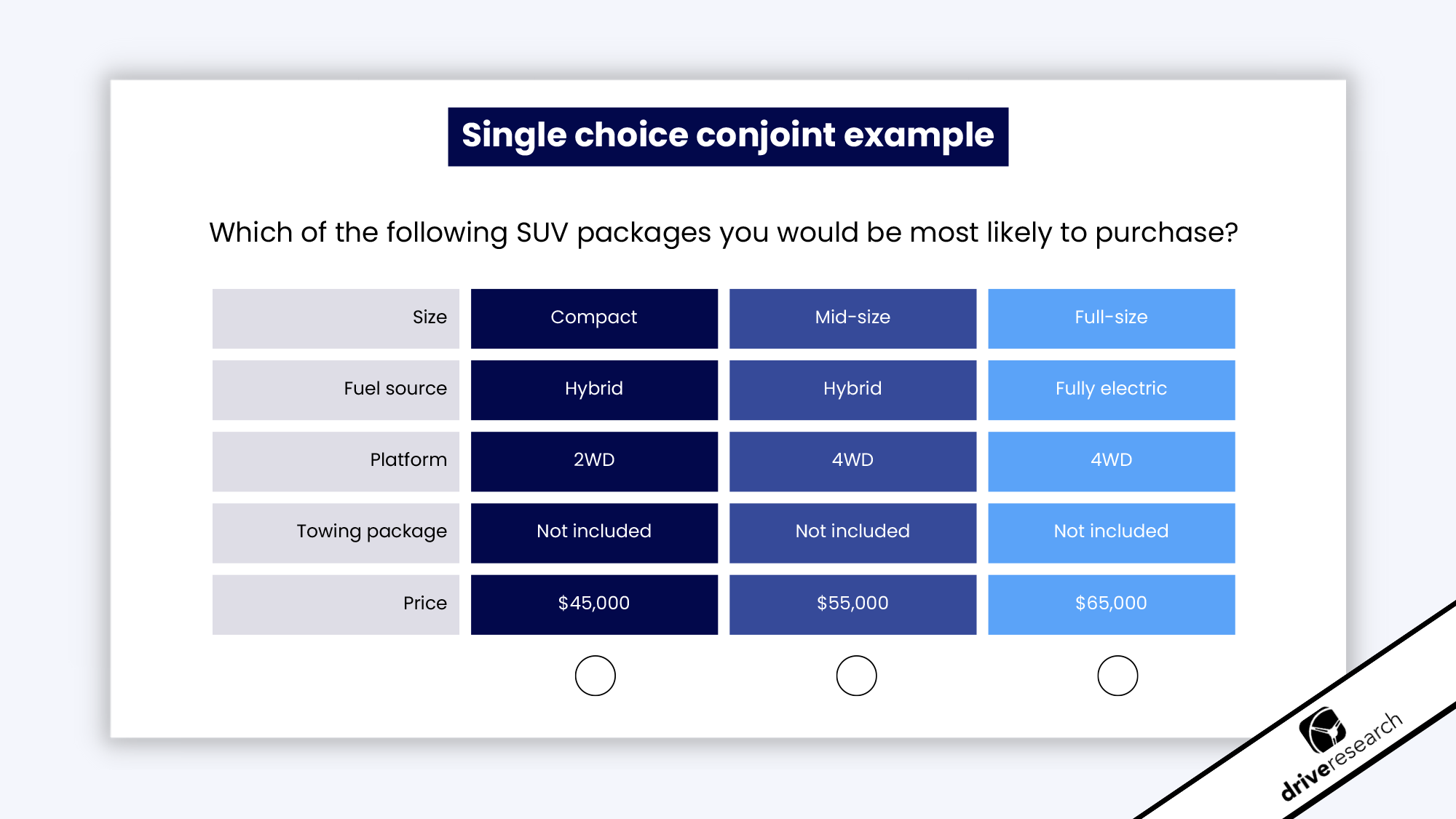
van Westendorp
The van Westendorp pricing model uses an online survey to strictly ask four open-ended questions:
- At what price do you think the product is priced so low that it makes you question its quality?
- At what price do you think the product is a bargain?
- At what price do you think the product begins to seem expensive?
- At what price do you think the product is too expensive?
Each of the averages from the questions is used to determine the acceptable price range for the product.
Contact Our Market Research Company
Are you interested in conducting a new product development study with Drive Research?
Drive Research is a national market research company based in New York.
Our team of research pros has years of combined experience in product development strategies and will help you apply them to your own product.
Get in touch with us through any of the ways below to learn more about our market research services.
- Message us on our website
- Email us at [email protected]
- Call us at 888-725-DATA
- Text us at 315-303-2040

Emily Rodgers
A SUNY Cortland graduate, Emily has taken her passion for social and content marketing to Drive Research as the Marketing Manager. She has earned certificates for both Google Analytics and Google AdWords.
Learn more about Emily, here.

